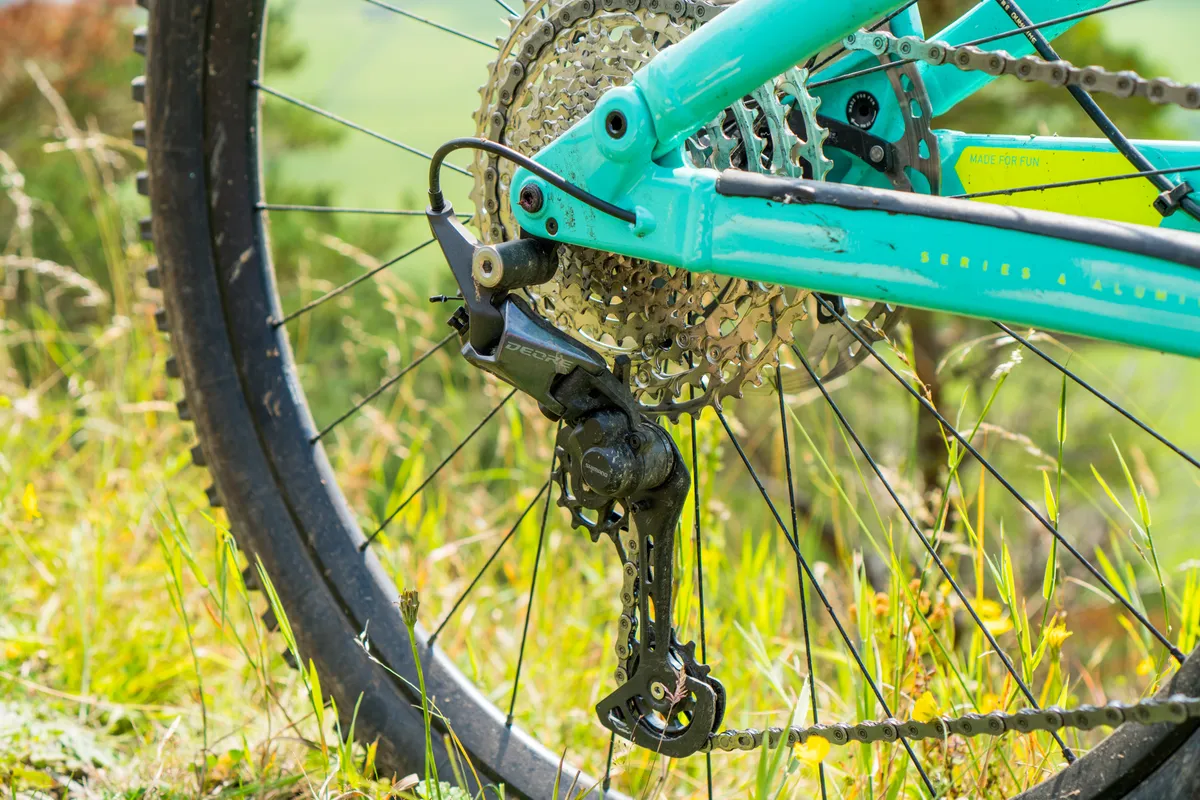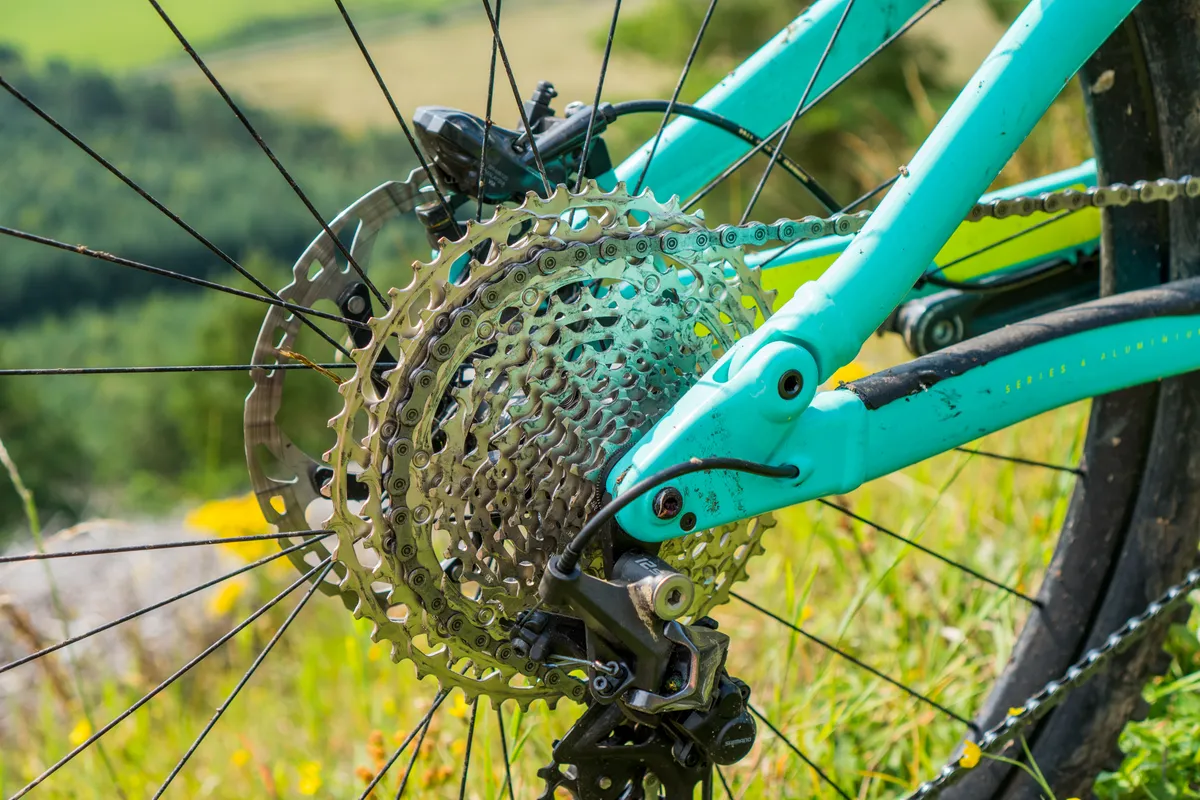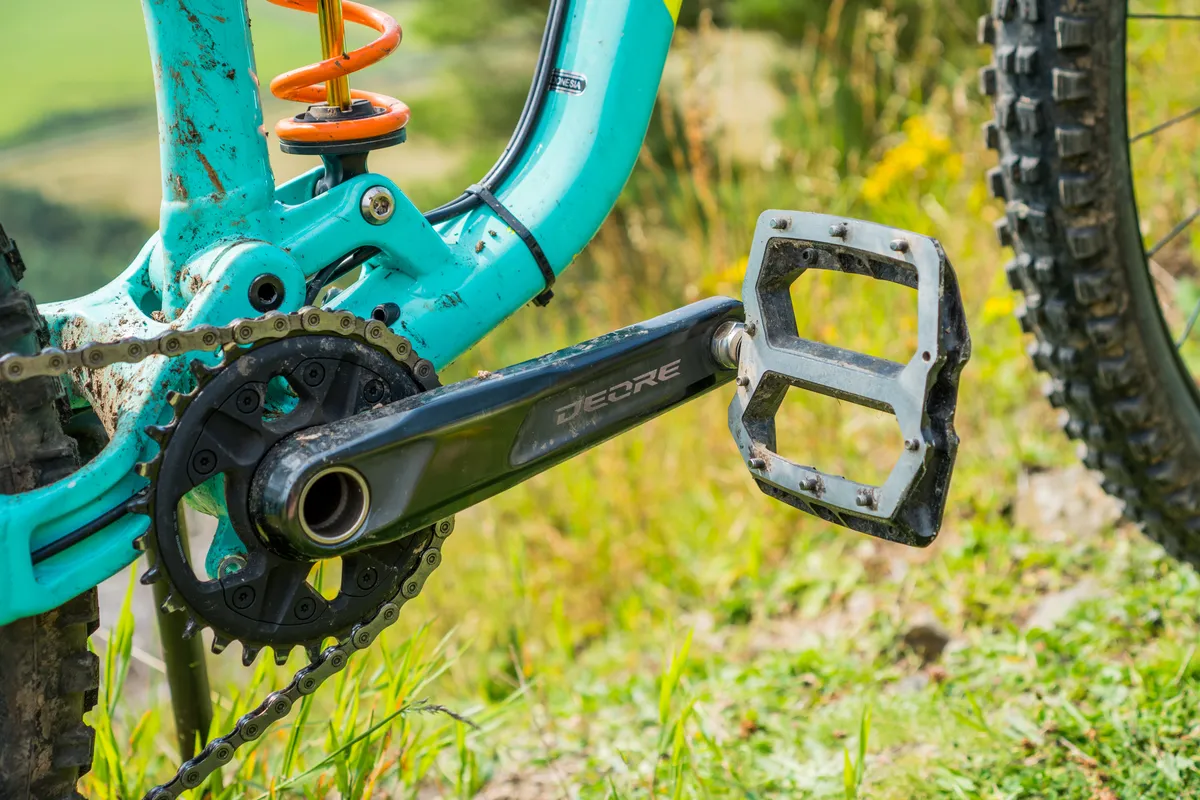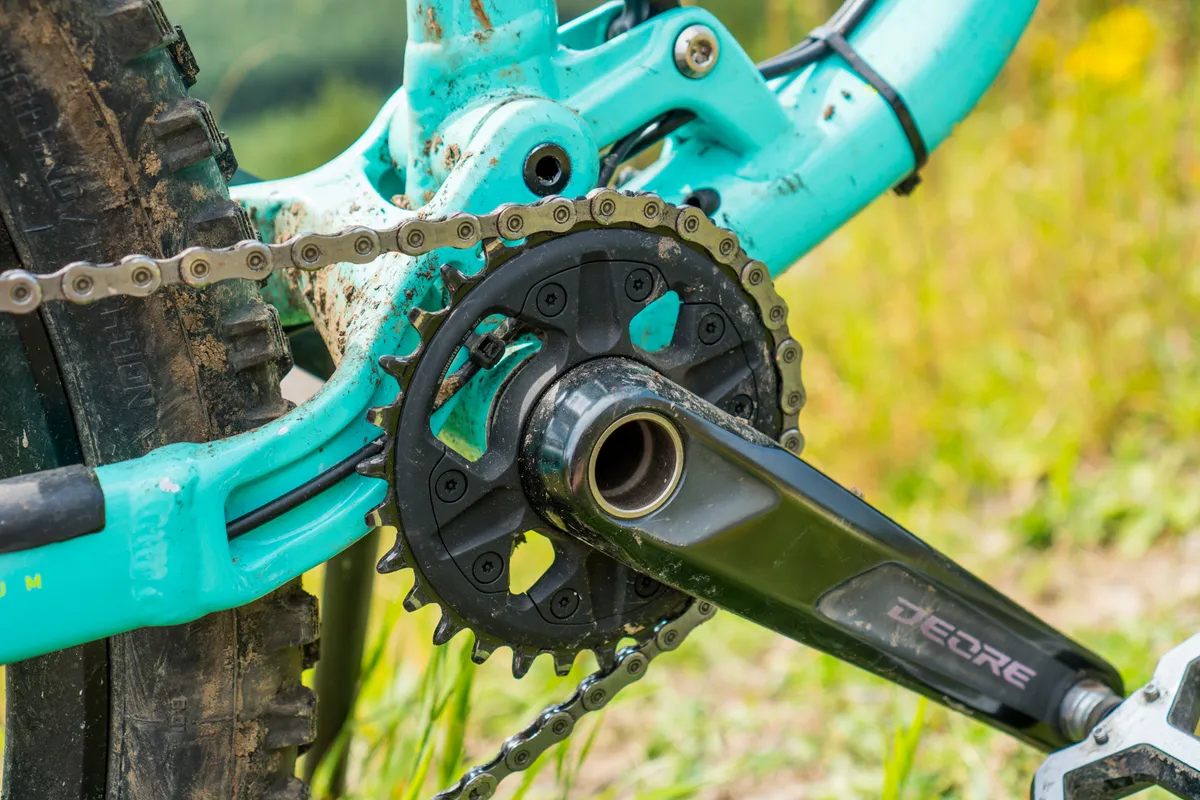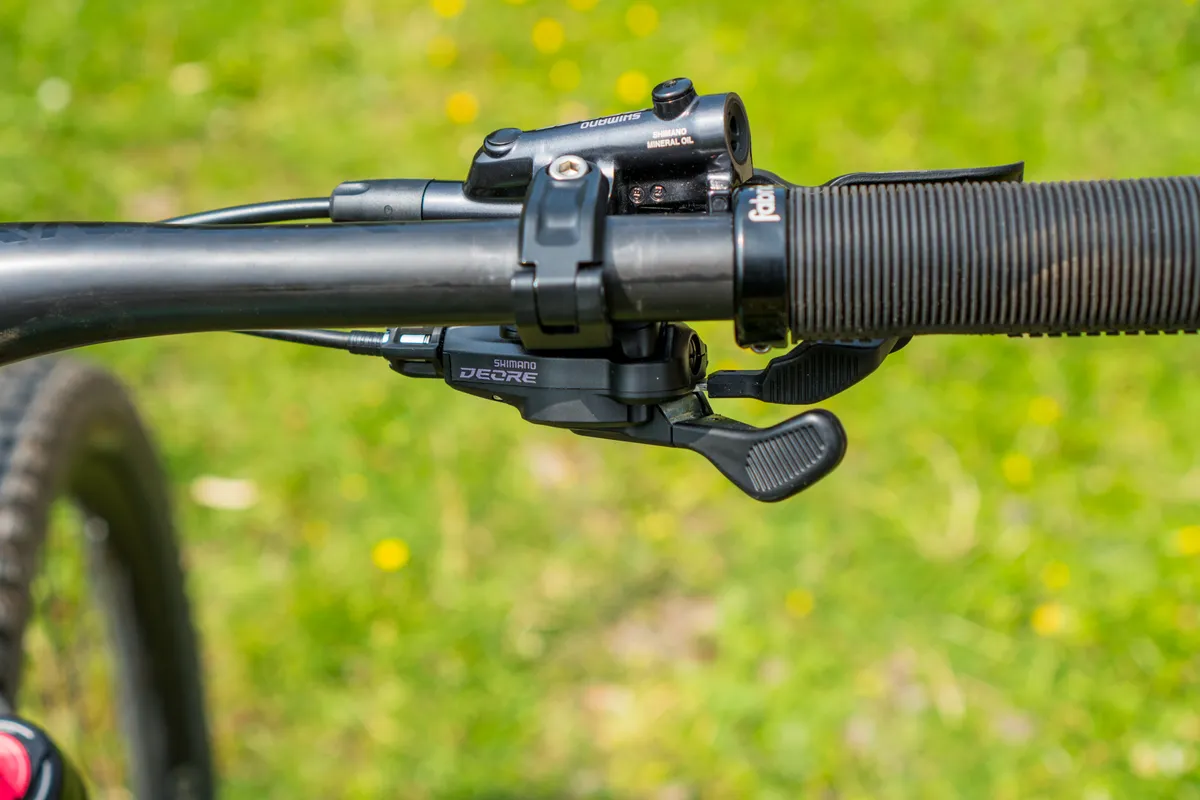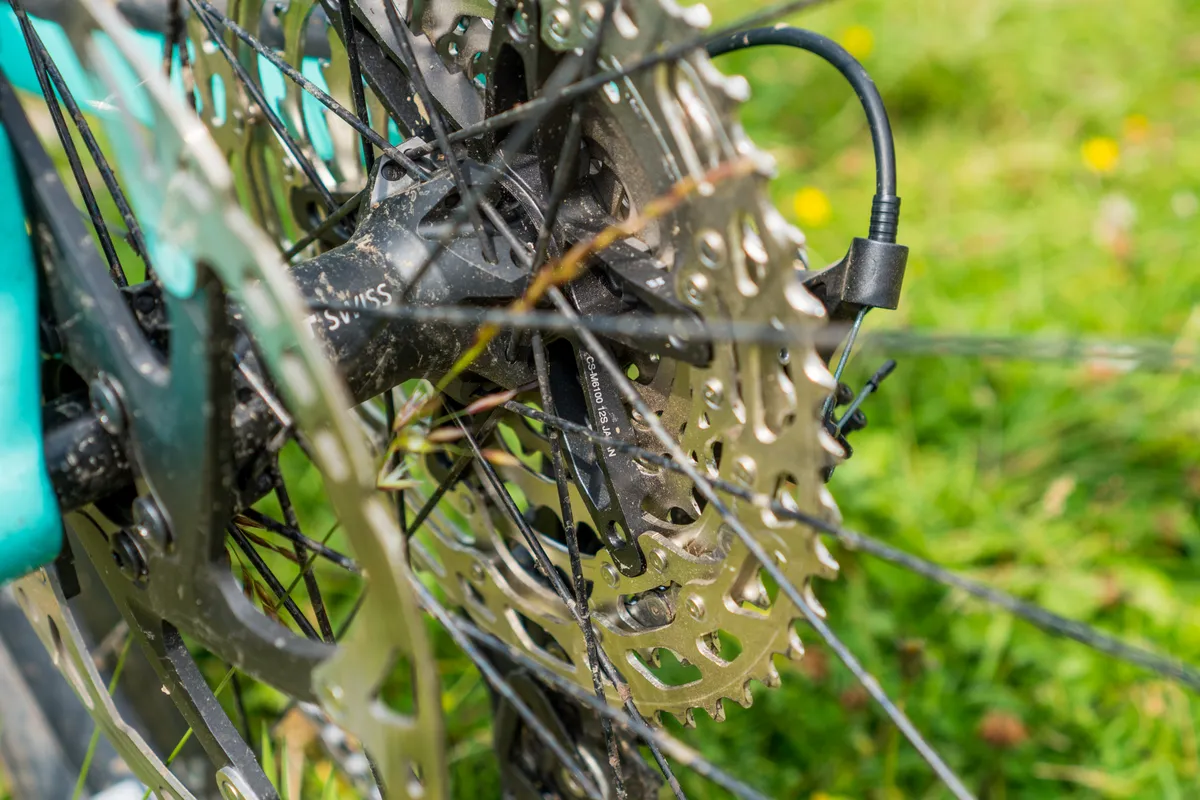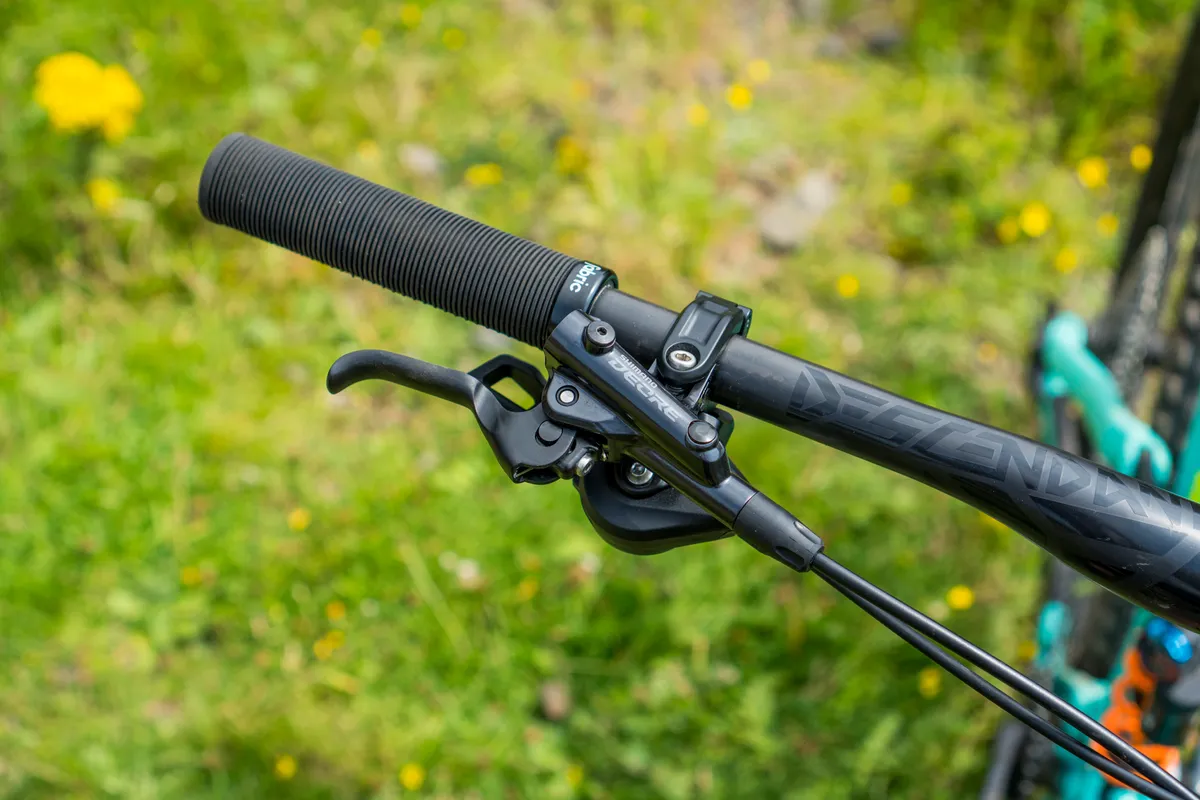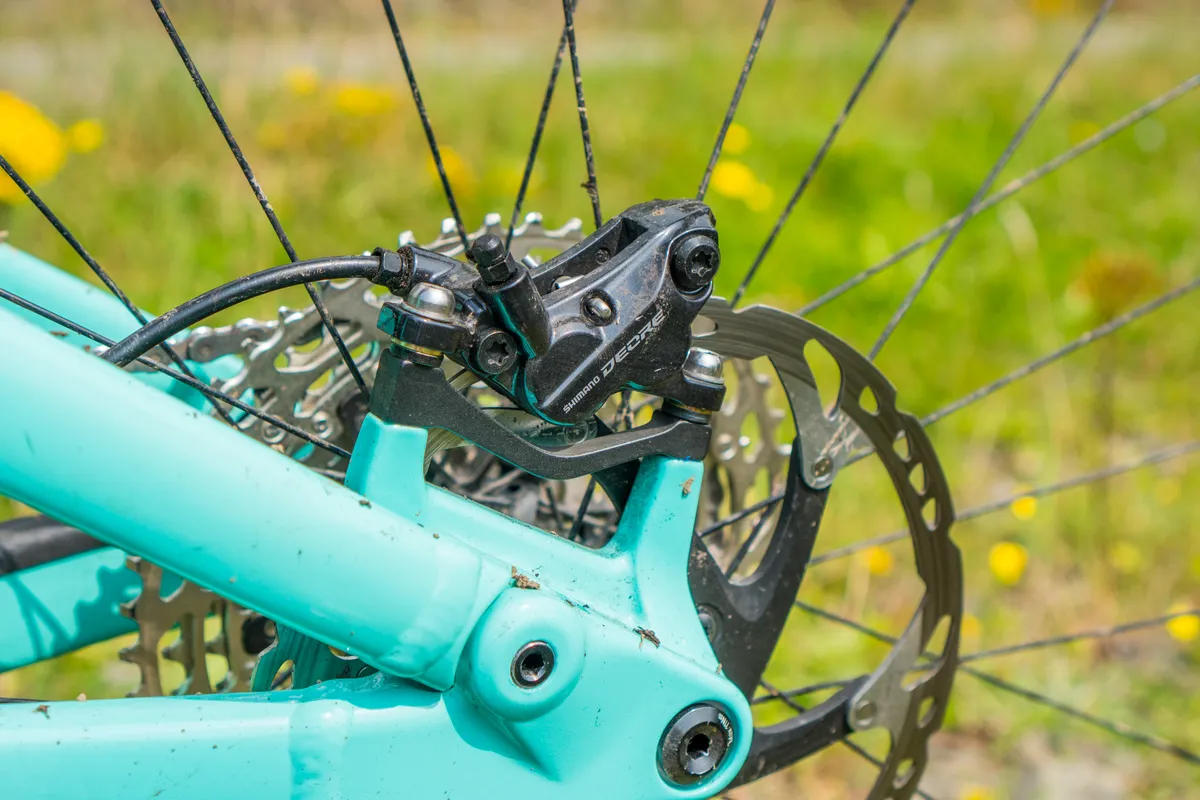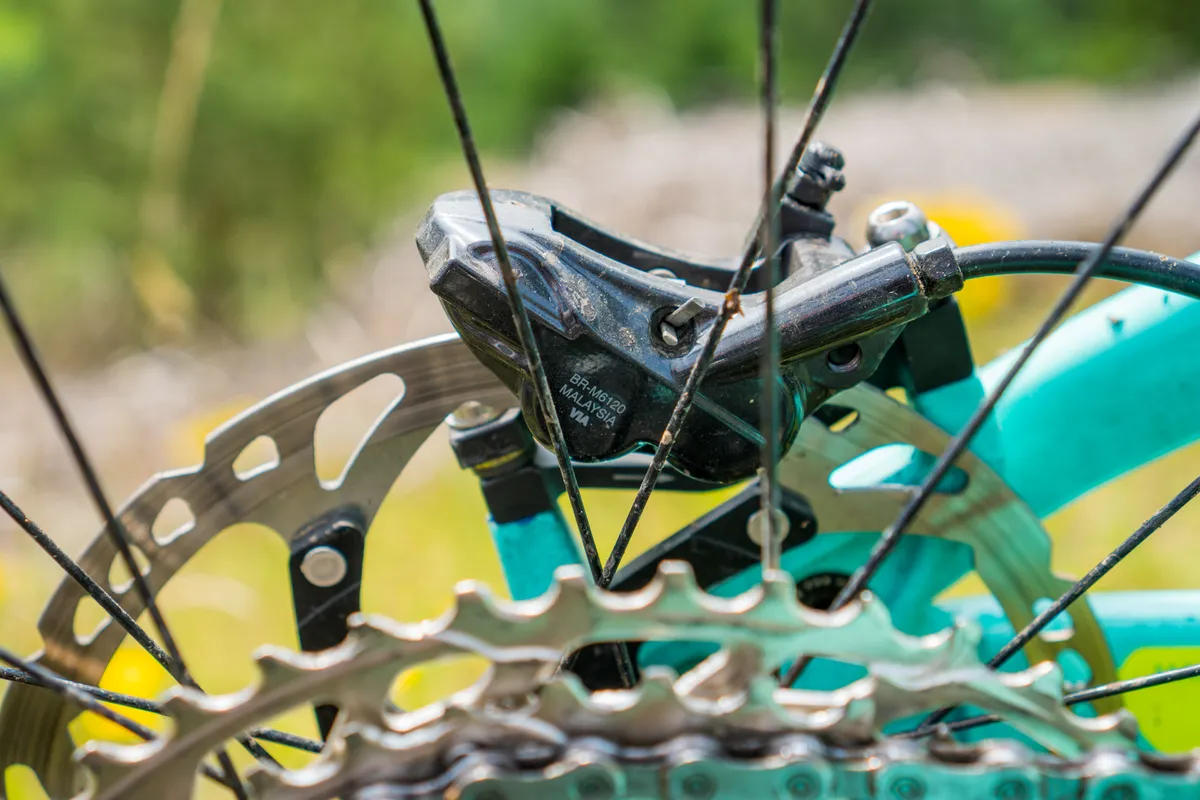This edition of BikeRadar Builds features the antidote to my Yeti SB165 27.5in-wheeled long-term test bike, the steed I’m using to try and prove 650b wheels aren’t yet consigned to the bicycle recycling bin.
As a bike tester, I’d be a fool to deny the existence and importance of 29in wheels and to pigeonhole myself into testing equipment on a 27.5in-wheeled bike only isn’t sensible, as much as I am hoping to prove their continued relevance.
In the name of due diligence and on my quest to find a suitable 29er, I spoke to Marin about getting my hands on an Alpine Trail frameset that I could build up to use as a testbed for kit to help populate BikeRadar’s pages with reviews to give you the best, most impartial advice I can.
Welcome to BikeRadar Builds
BikeRadar Builds is our occasional look at the team’s personal bikes, including custom rigs, commuters, dream builds, component testbeds and more.
This is our chance to geek out about the bikes we’re riding day-to-day, and explore the thinking (or lack of it!) behind our equipment choices.
Marin’s 29in Alpine Trail frameset
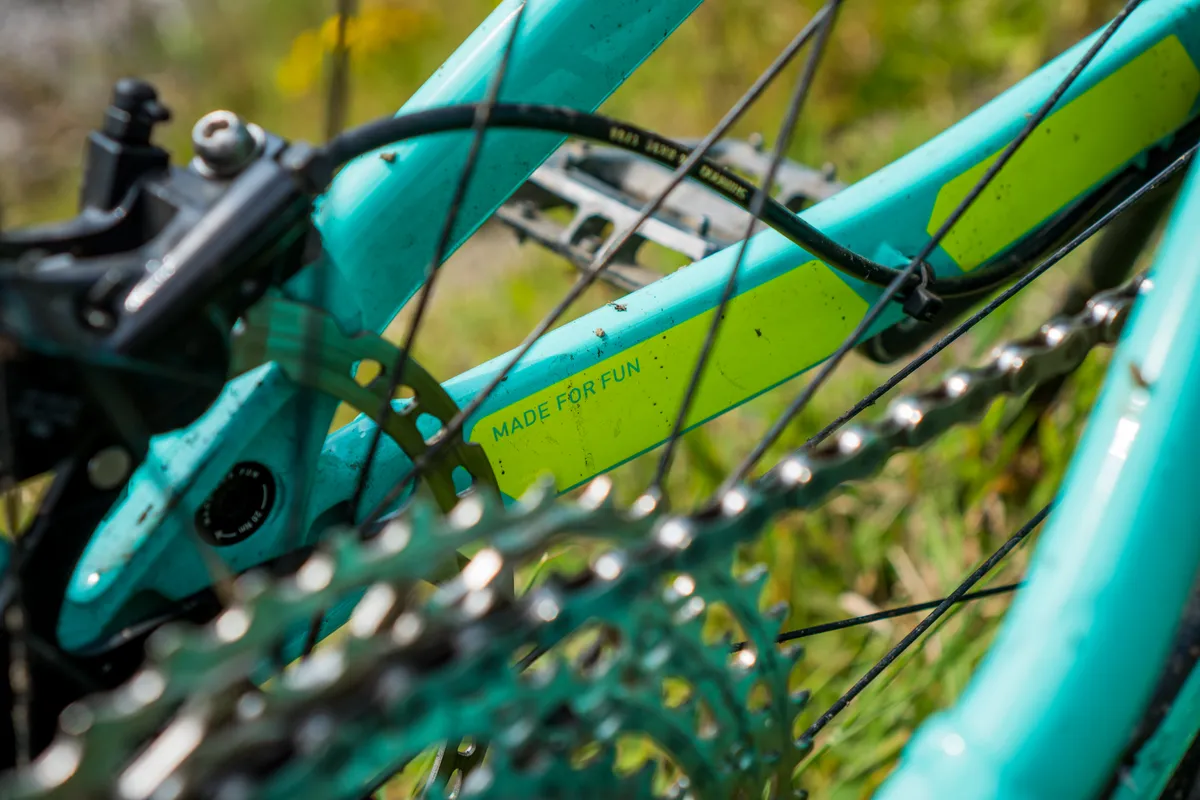
I’ll be the first to call out the Alpine Trail’s geometry as conservative by modern-day standards. Luckily that won’t affect prospective buyers because my frame has since been updated with a newer, more modernised version with slacker figures.
I’m stuck with the old model, however, so what are we dealing with, then?
My size large has a 65-degree head-tube angle, a 465mm reach and a 75.68-degree effective seat-tube angle. Elsewhere it’s got 430mm chainstays and a 1,228.9mm wheelbase.
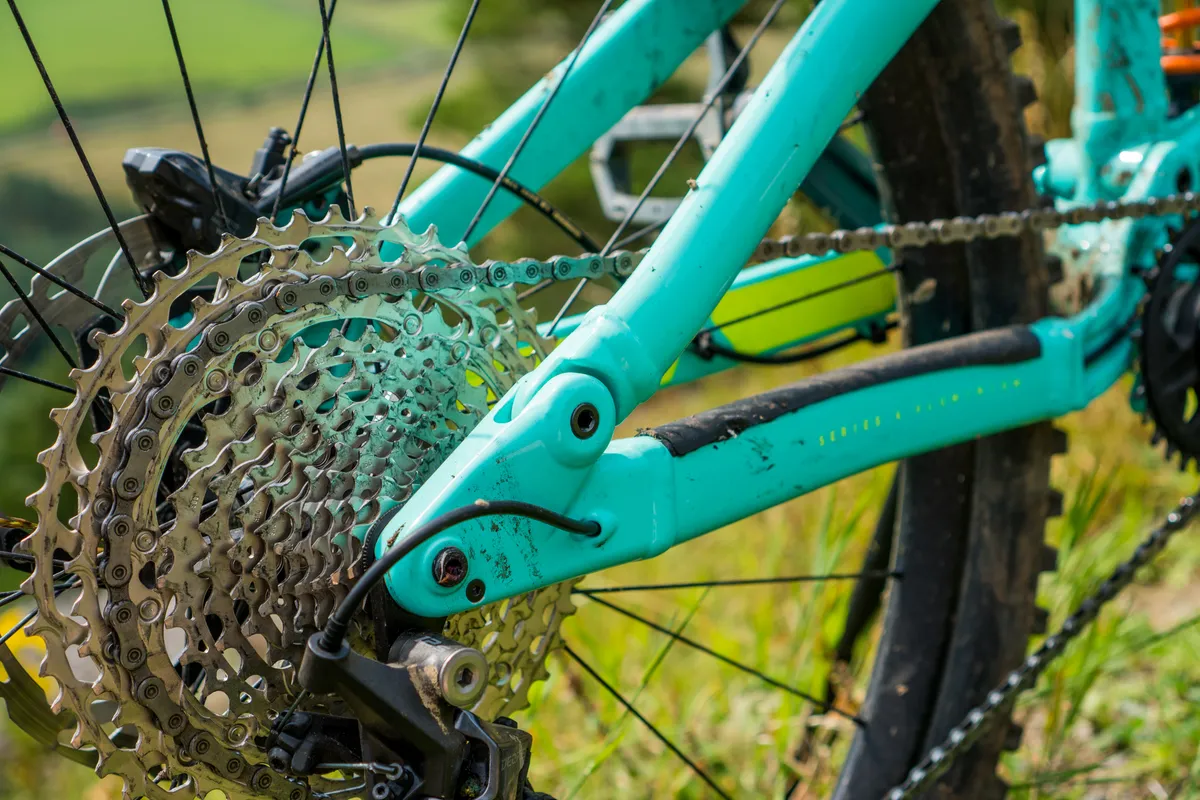
In the real world, what do these numbers mean? They translate to a bike that’s more playful than it is stable – or flickable for those in search of another positive synonym – and better suited to dodging trees than setting speed records on the slopes of a mountain.
For me, though, the proof is in the pudding and the Alpine Trail has already helped propel me into the top ten on some spicy Strava leaderboards in my neck of the woods. Take that with a pinch of salt – I sure have – but the signs point to the Alpine Trail being a pretty capable bike.
Middle of the road marvel
Most importantly, the Alpine Trail’s geometry is neutral enough to represent a wide range of bikes on the market today. This means I’m testing kit on a bike that’s, at the very least, similar to large swathes of rigs on the market today, furthering my ability to provide relevant buying advice.
As a caveat to that, as time progresses, and slacker, longer and more relaxed geometry becomes commonplace, I will look to update the Alpine Trail with a new frame with more modern geometry (hint, hint, Marin) to maintain the relevance of my testing process.
The devil is in the detail
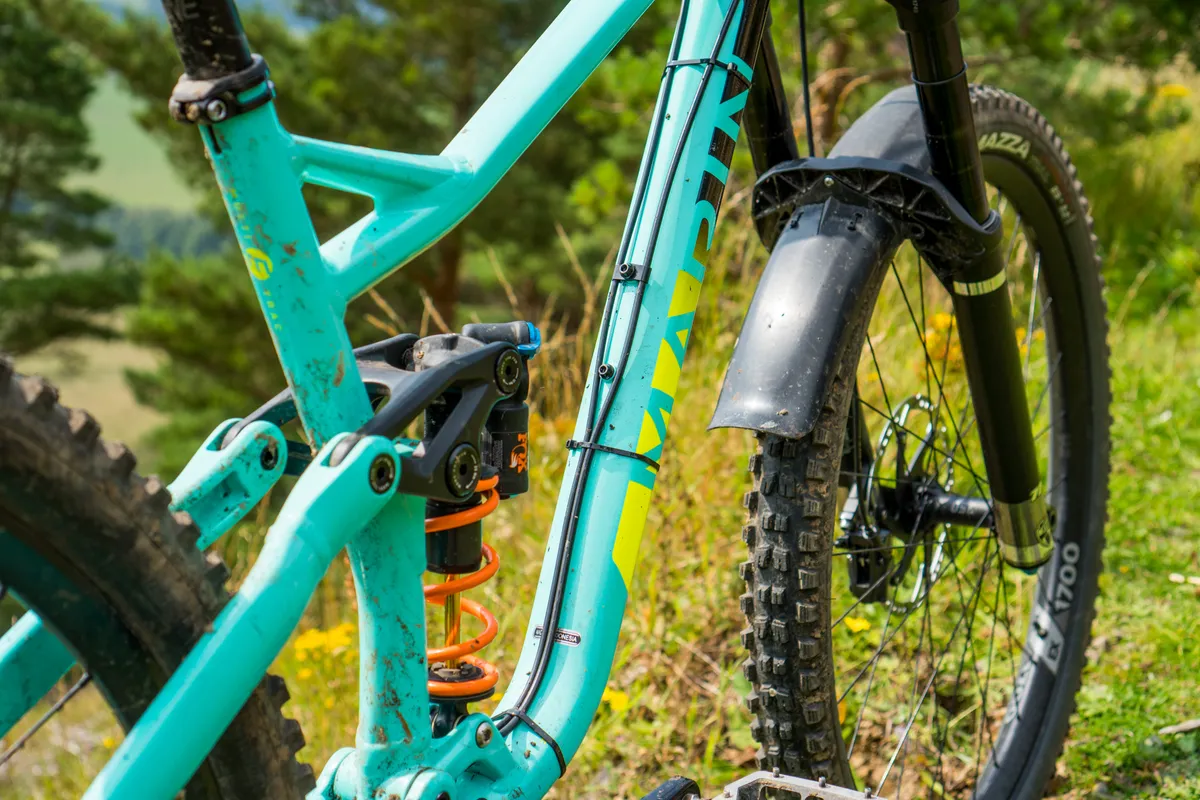
I’m vocal about my dislike of internally routed cables, an opinion founded in my general dislike for bike maintenance.
That’s not to say I can’t maintain bikes (in fact, like many bike journalists, I’ve worked in plenty of bike shops and, like all ex- or current racers I’ve maintained my own bikes at events under pressure), but having to constantly internally route cables when testing brakes (and inevitably bleeding them), or replacing gear cables after yet another mud-strewn ride, gets tiring.
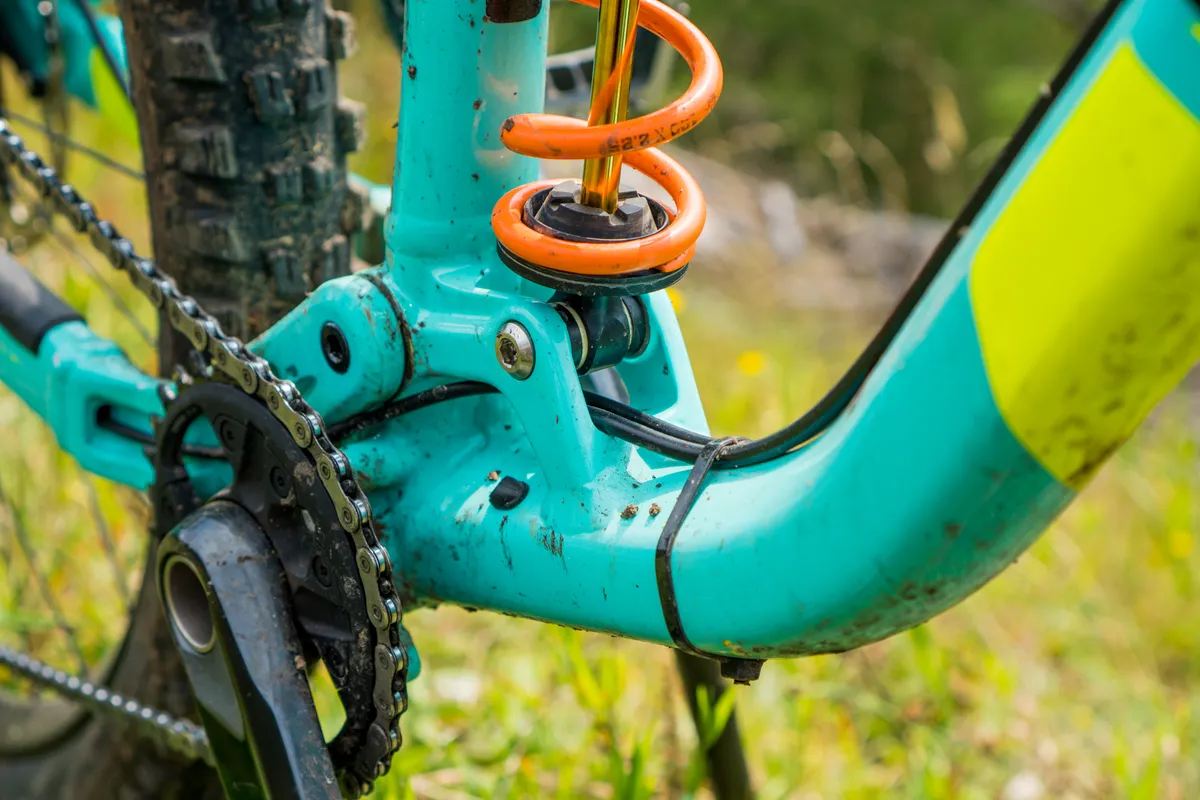
I’ve taken the liberty of ignoring Marin’s carefully crafted internal routing and fashioned my own zip-tie route for the brake and gear cables. While I’ll admit this doesn’t look ‘clean’, it’s functional and when I went to change the brakes for the third time since owning this bike, I was grateful for my wise choice.
Big bouncer
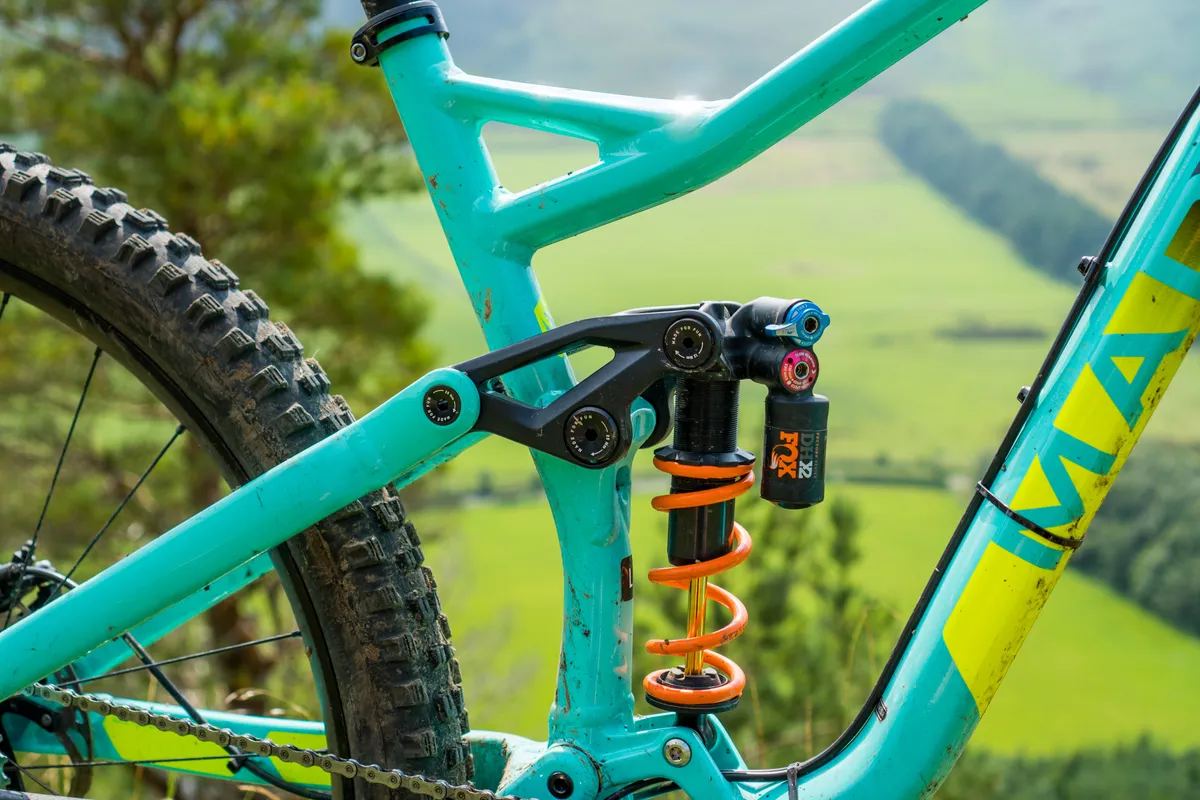
The Alpine Trail has 150mm of rear wheel travel, and while this model year of stock bike is supplied with a Fox Float DPX2 air-sprung shock, Marin recommended I use Fox’s DHX2 coil-sprung shock because it’s got a relatively progressive kinematic.
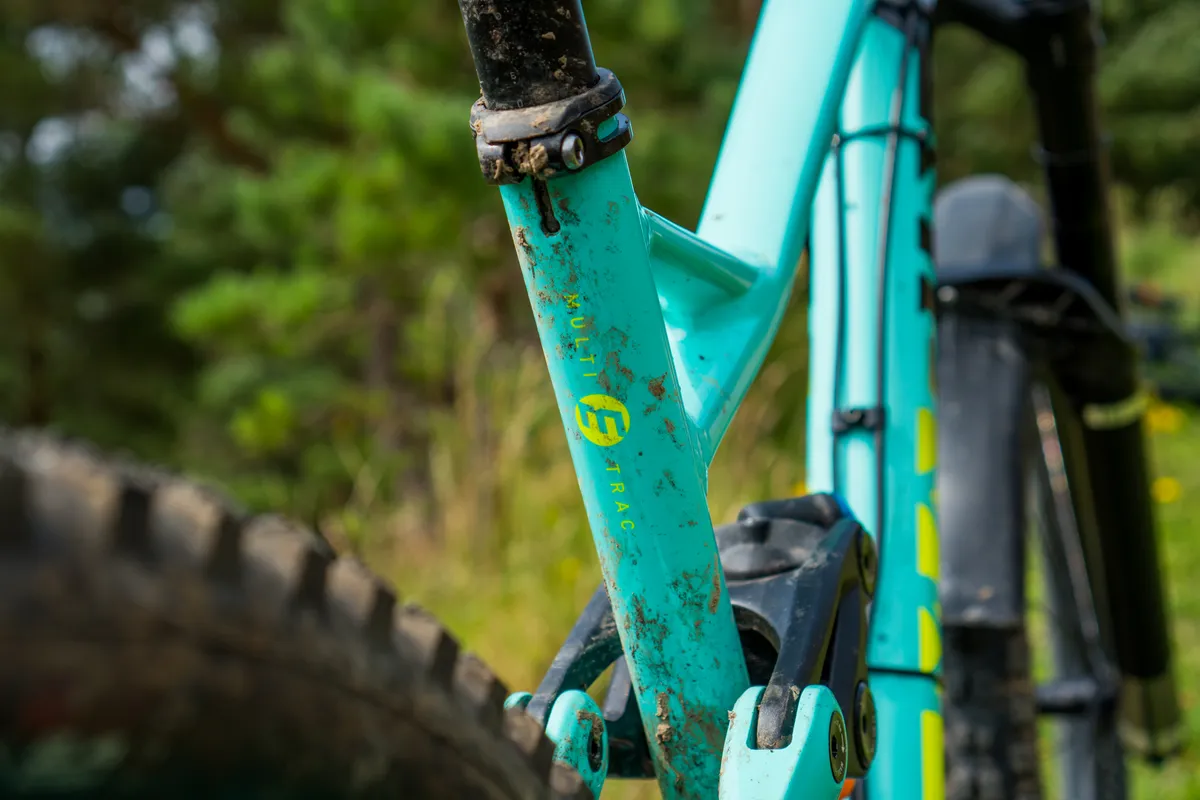
This means the design of the bike’s suspension makes it stiffer as it compresses through its travel, helping to combat the typically linear rate of a coil spring.
After fiddling with spring rates, I settled on a 450lb, finding this the best balance of small bump smoothness and comfort with big-hit resistance.
Parts bin special
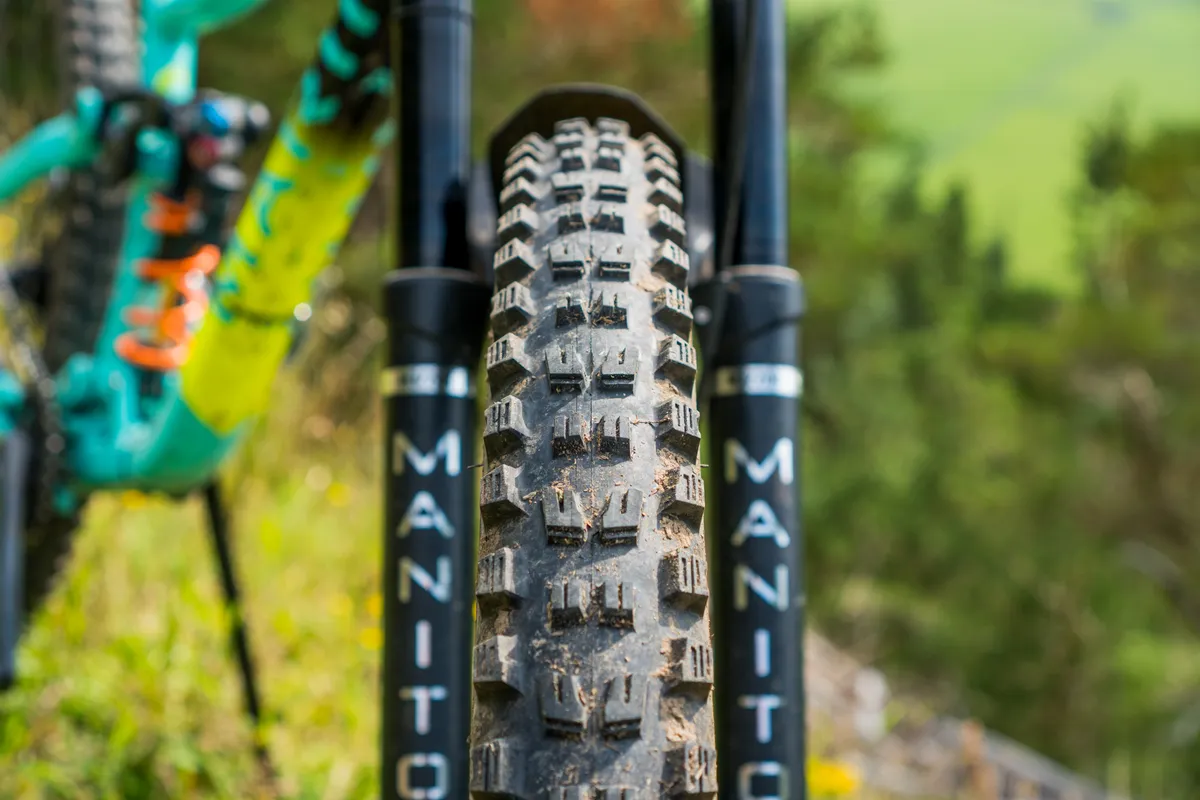
Okay, you’ve got me, this headline’s a bit misleading. Some of the bike’s parts are indeed right out of the parts bin – which means they’re frightening familiar because they’re bits of kit I have tested – but a large portion of the bike’s spec is brand-spanking new 2021 kit.
I’ll start with the well-used kit first.
Manitou’s Mezzer Pro forks
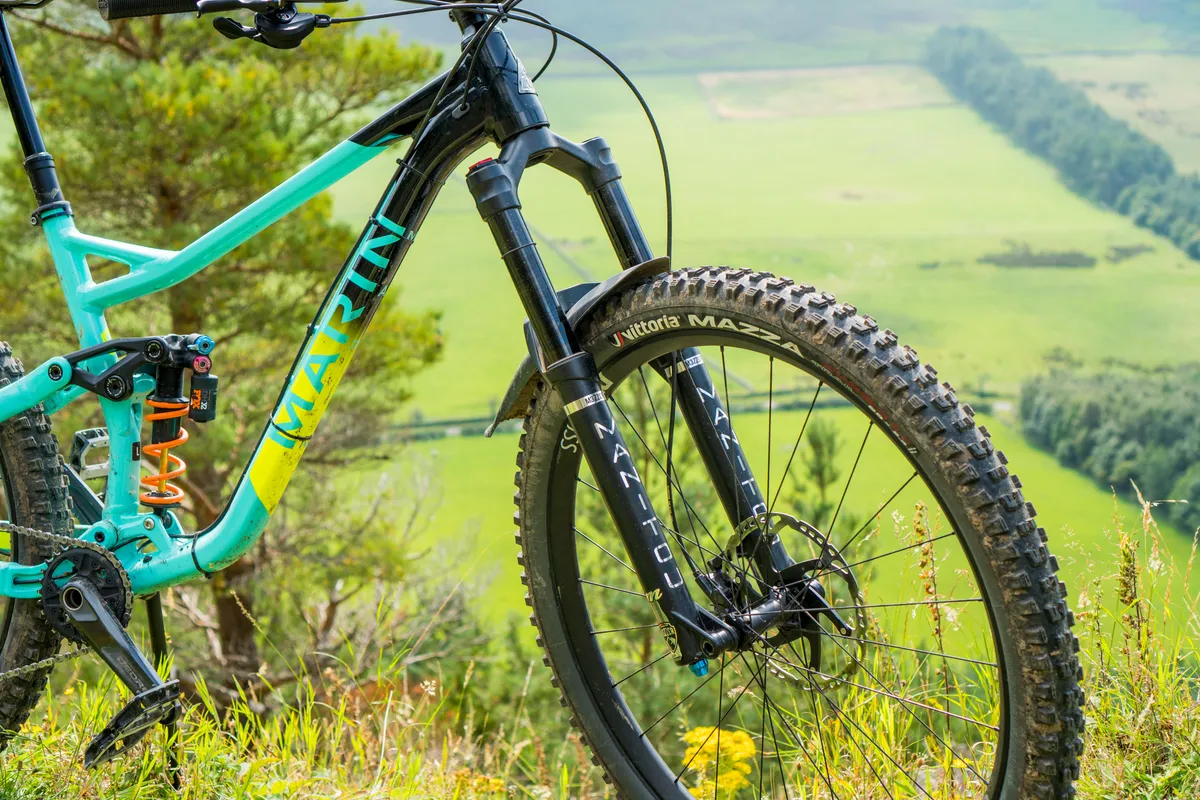
I reviewed the Mezzer back in 2019, gushing over its on-trail manners, so it seemed fitting to bolt it to the front of the Alpine Trail given how much I enjoyed riding it.
Although things have arguably moved on a bit since 2019 – especially with Fox’s 38 fork and RockShox’ Zeb – the Mezzer is still a top-notch performer especially when the trails get particularly rough, fast or steep.

I’ve had to modify the Manitou mudguard to provide extended coverage – especially here in Scotland – to stop slop and grime constantly splattering me in the face.
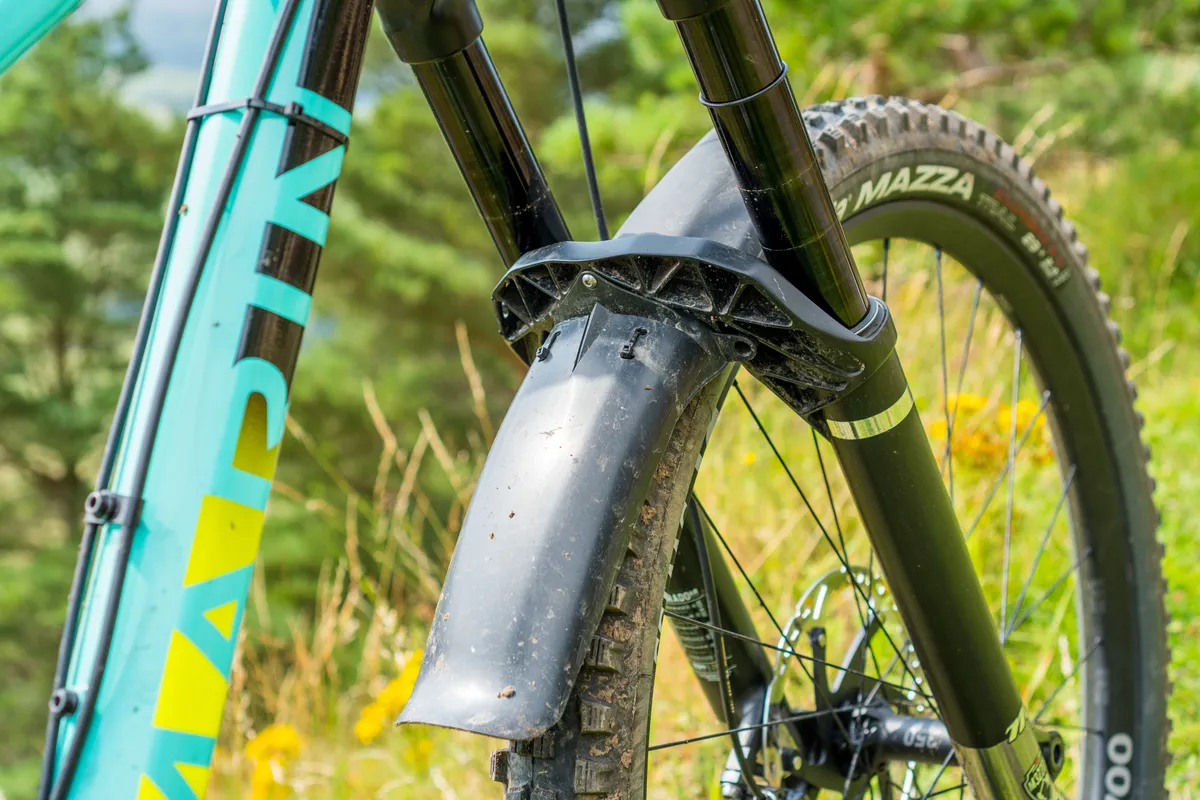
The Mezzer is also a constant – because I’ve ridden it so much – for the test bike, which means I can change wheels, tyres, bars and other parts to gauge how they feel compared to one another rather than changing even more variables at one time.
OneUp V2 dropper post
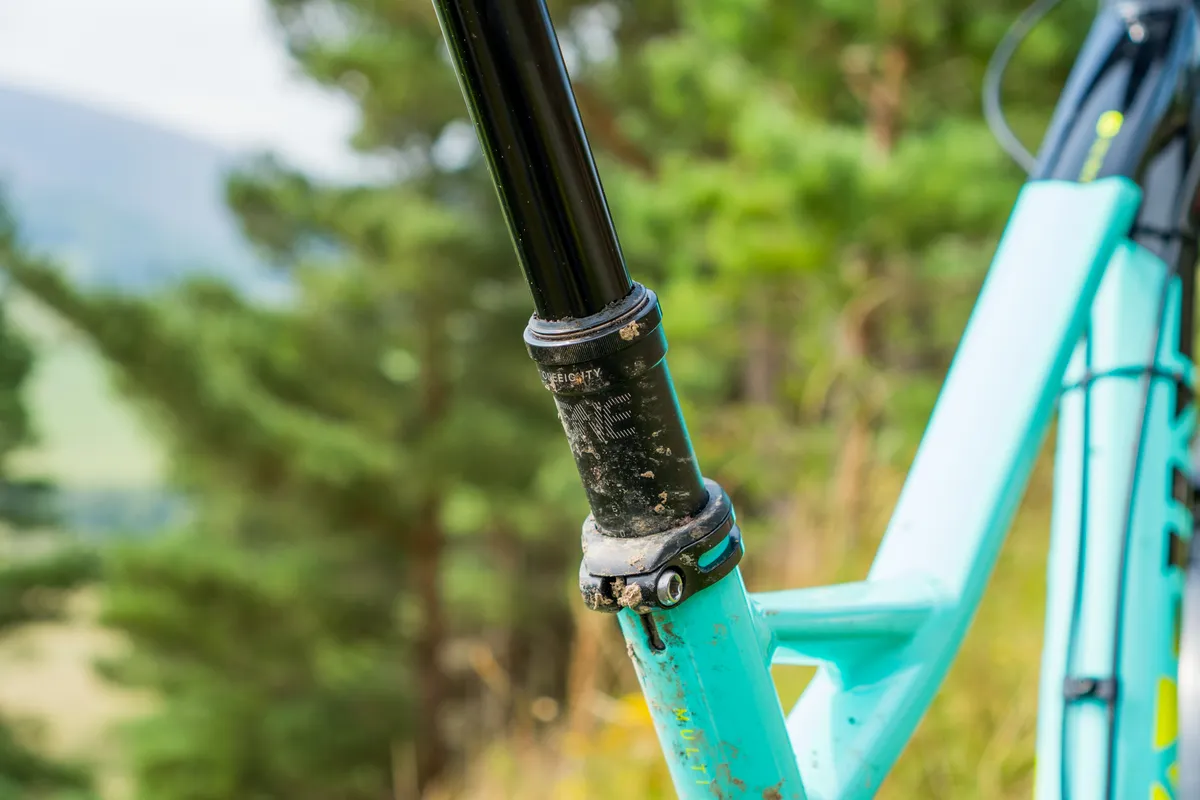
The keen-eyed among you will spot I’ve fitted OneUp’s V2 Dropper Post with 180mm of travel. Like the Mezzer, I’ve been seriously impressed with the post’s performance and have used three different V2s with a 100 per cent performance success rate so far, proving it’s worthy of its five-star score.
I opted for the 180mm travel post because the Marin’s got a kink in the seat tube, but could have easily fitted the 210mm drop I’ve got on my Yeti long-termer and my former long-term test bike, the Orange Stage 6 without it hindering me on the descents.
Comfort with familiarity
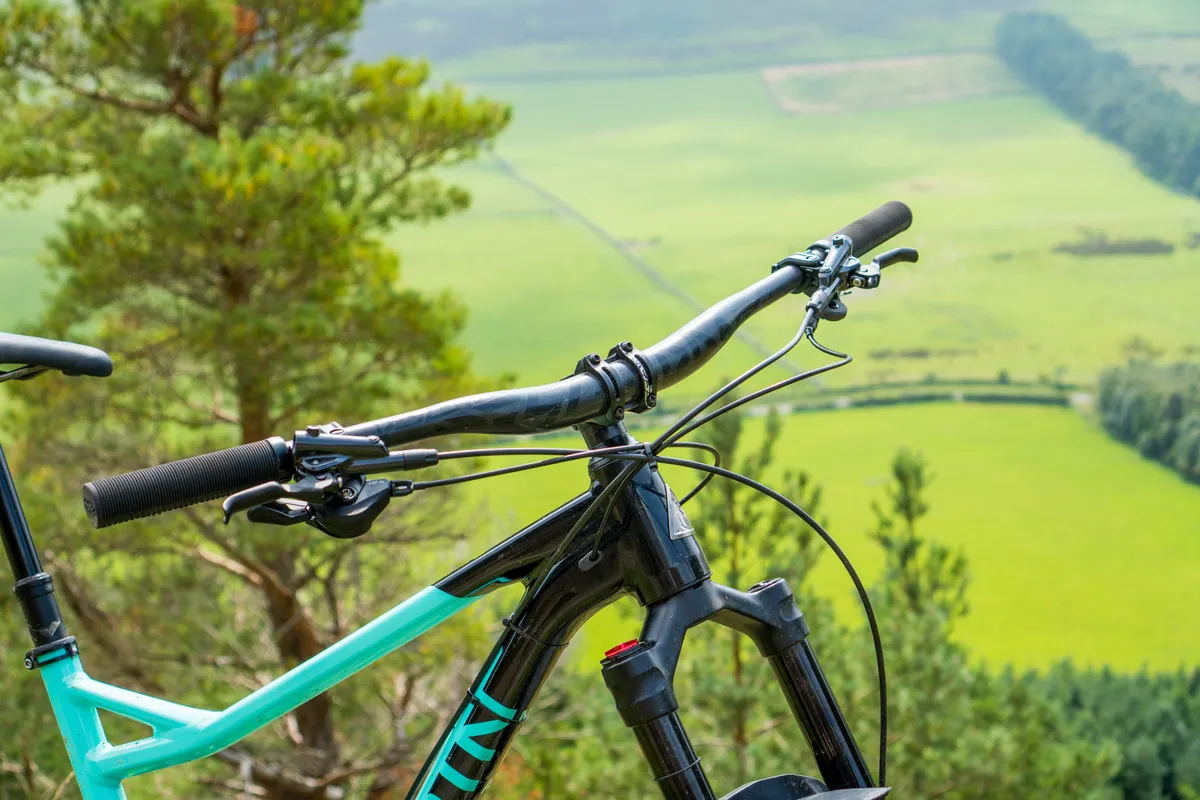
Elsewhere, I’ve fitted OneUp’s Carbon Handlebar – the same bar I’ve got on my Yeti long-term test bike – and my favourite Fabric Funguy grips along with an old Truvativ stem I had kicking around.
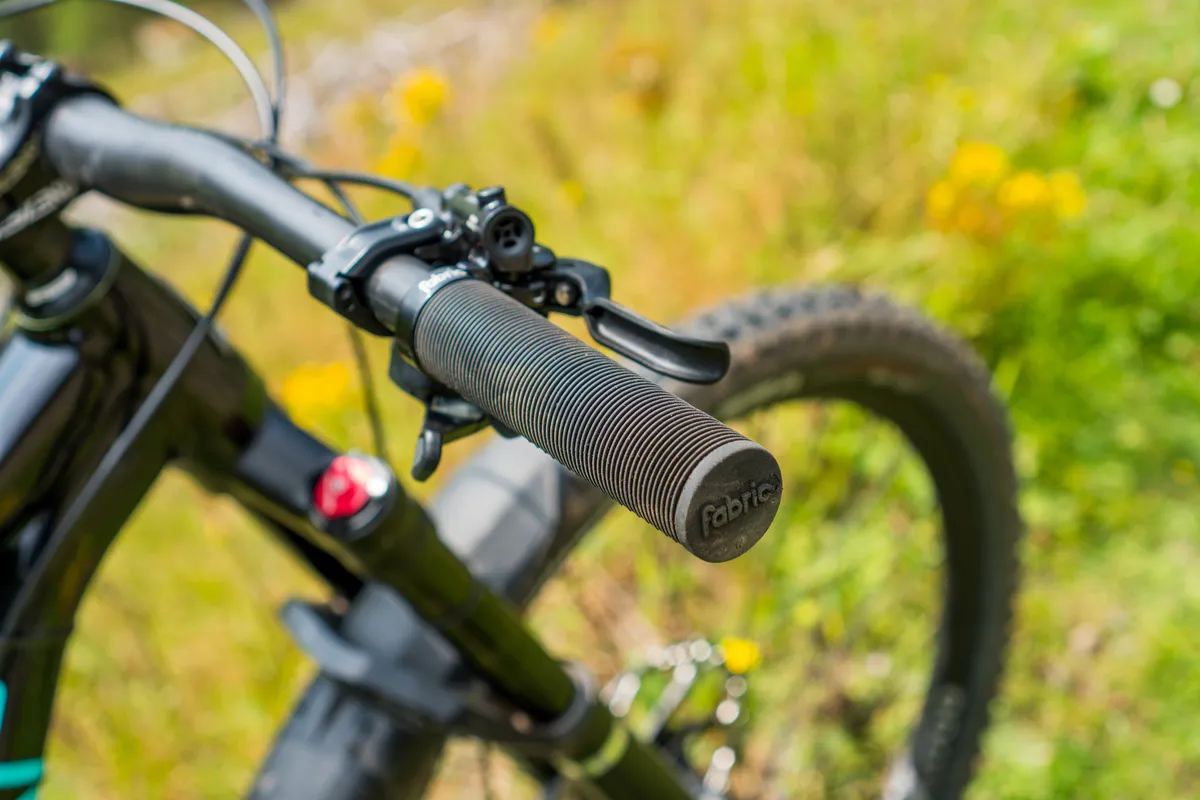
I’ve also bolted on Selle San Marco’s GND Gel Racing saddle that I’ve previously tested, awarding it four stars.
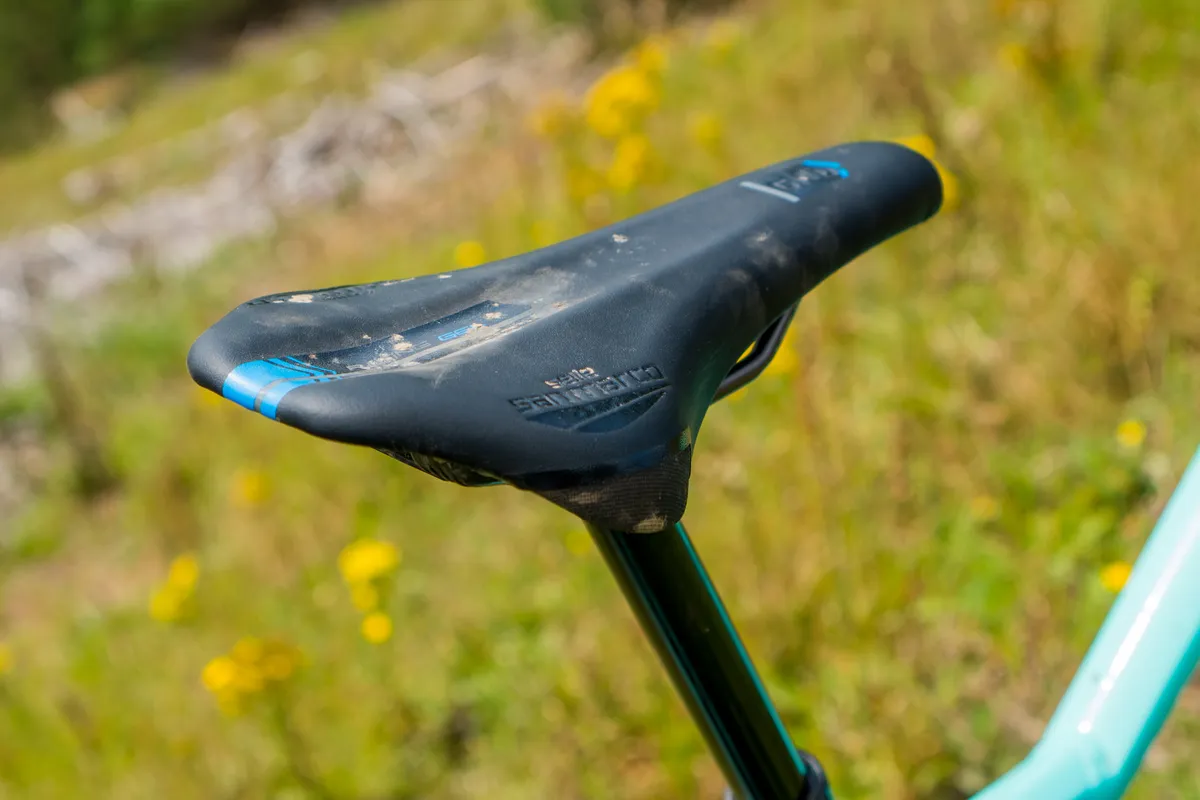
Except for the stem, I’d have chosen to fit these parts to my test rig even if they weren’t sitting in my parts bin, thanks, mostly, to their ratified performance and the welcome continuity between bikes (my long-termer also has Funguy grips).
Grippy in the summer
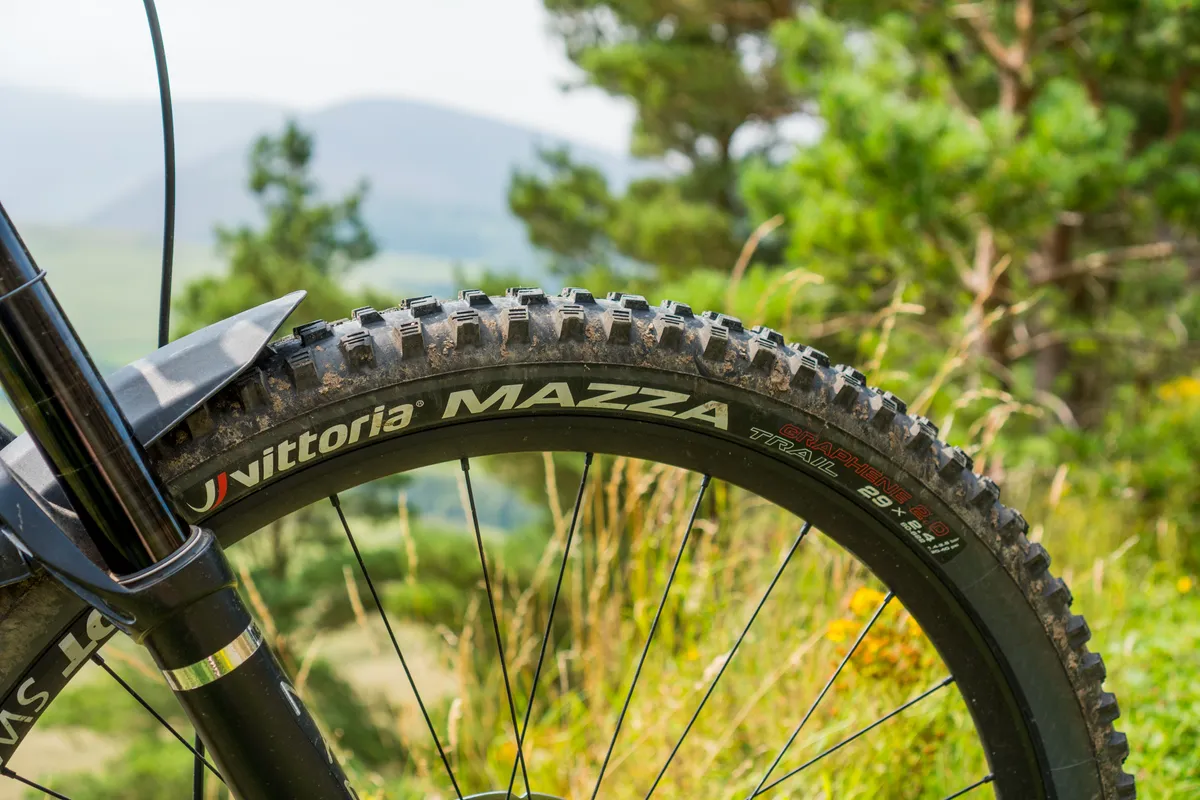
I found the Vittoria Mazzas performed well this summer, best-suited to dry conditions. They’re less suited to the winter weather though, and luckily I’ve been using the Marin – and my Yeti – to test a host of trail tyres including rubber from Maxxis, Schwalbe and Specialized.
Luckily, some of the tyres on test are well-suited to the UK winter, so stay tuned for full tyre reviews soon.
Flat pedals win medals
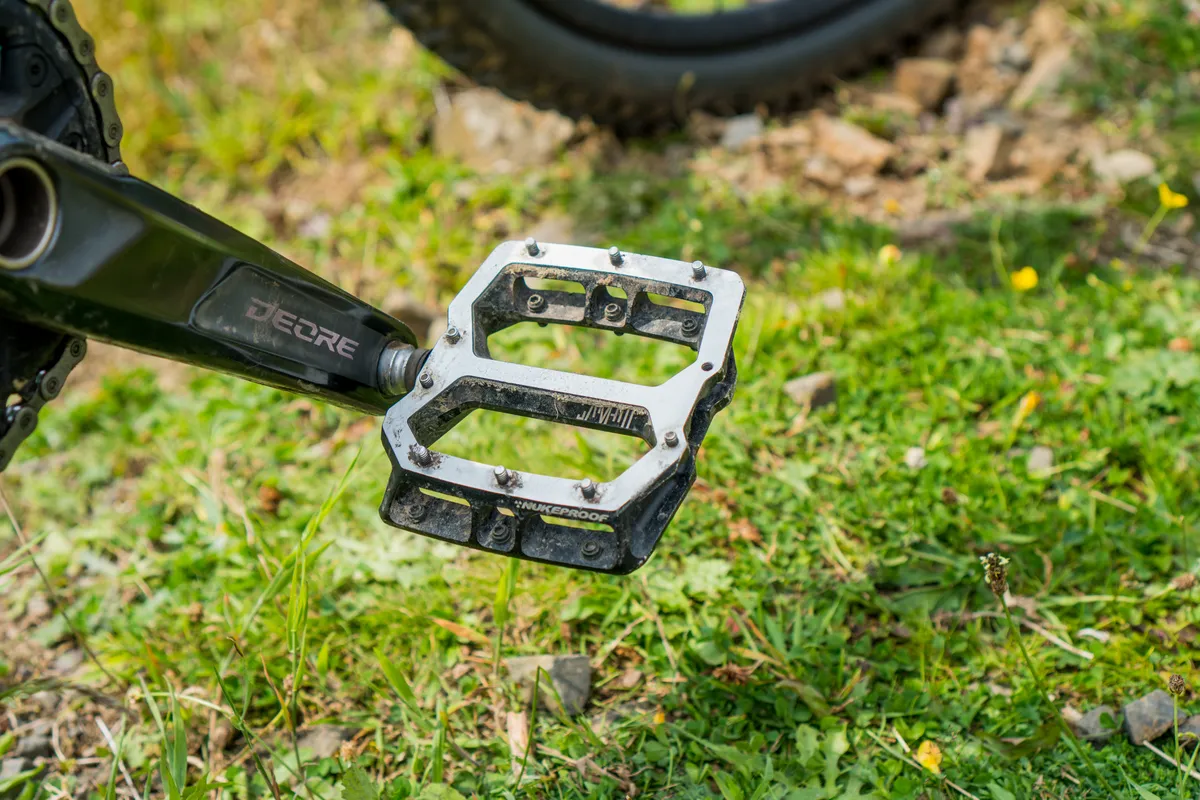
I’ve bolted a set of Nukeproof’s Sam Hill pedals to the bike because, well, if they work for the world’s best flat-pedal rider then they’re going to work for me.
New kit to finish the build
Elsewhere I’ve fitted parts to the Marin that I’ve tested more recently and am still in the process of testing.
Shimano’s affordable Deore 12-speed drivetrain
That’s right, I’ve been putting in some serious time on Shimano’s 12-speed Deore kit to bring you a comprehensive in-depth review. The process is still ongoing and I’ve so far clocked up 530 gruesome kilometres on the drivetrain, which has given me the chance to discover a few issues with the budget 12-speed kit.
More testing is needed but, generally speaking, the Deore kit seems to be working well considering its relatively diminutive price tag. Look out for a full review in the coming months.
Deore stoppers to match the 12-speed kit
In the name of completeness, I’ve also fitted a set of Shimano’s new Deore hydraulic disc brakes.
Although they were a complete pain to bleed – mostly thanks to the basic Shimano bleed kit and mineral oil (I implore Shimano to take a look at SRAM’s rather fantastic Bleeding Edge system and bleed system, it’s much, much easier) – they’ve been performing well during the test period. Stay tuned for more.
DT Swiss’s EX 1700 Spline wheels
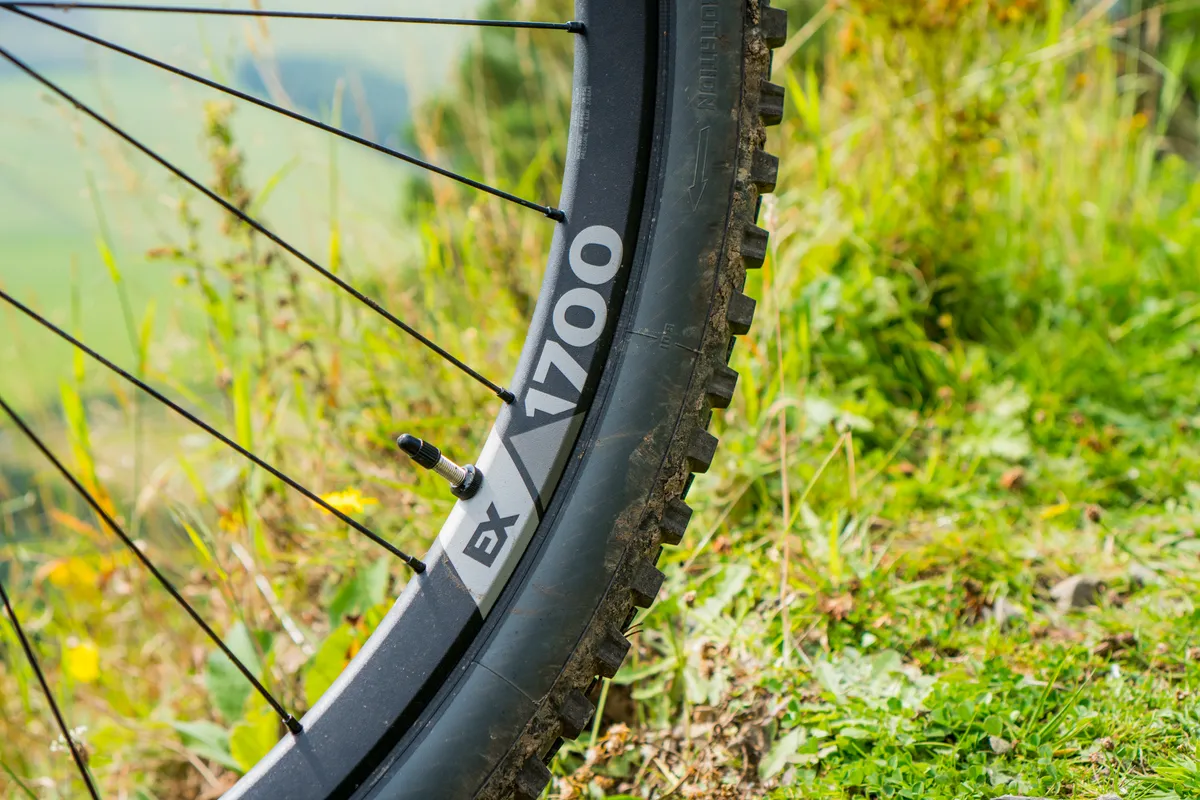
Keeping with the affordable theme, I’ve been using the EX 1700 alloy-rimmed 350-hubbed wheels on the Marin. They’ve proven to be a formidable partner to the enduro-focused frame and have so far resisted all dings and remained true.
They’re also being used as the main test wheels for the upcoming trail tyres group test I mentioned earlier.
How much does it weigh and cost?
The first of those questions is easy to answer. The full bike, as pictured, without pedals weighs 15.61kg or 34.41lb. That’s not bad for an aluminium, Deore-level 150mm travel enduro bike.
The second question is trickier to answer, but after getting my abacus out of the loft I estimate this custom build Alpine Trail is roughly £4,082.88.
The Alpine Trail can’t be bought frame only, but Marin said it would retail for roughly £1,500 to £1,800, as a guide.
What’s next for the Marin?
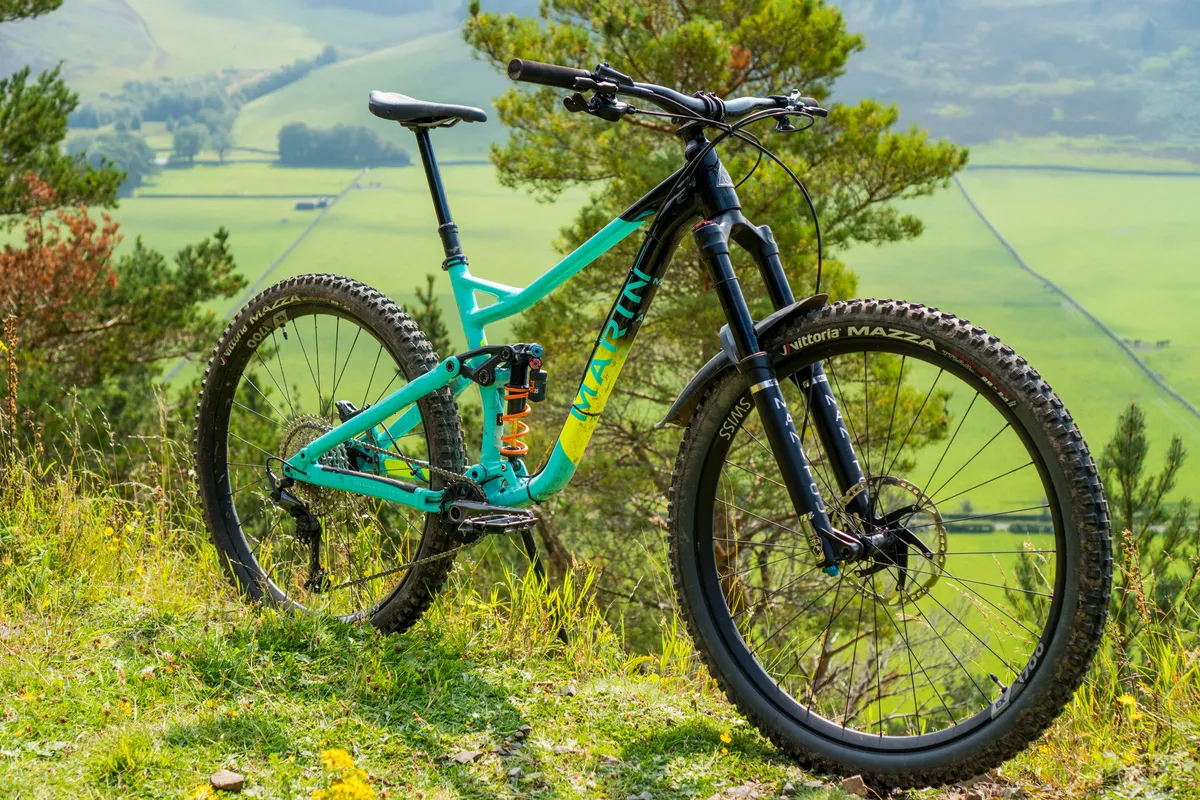
The Alpine Trail has a mucky winter of testing ahead of it, grinding up and down the mountains to help me bring the best buying advice to you.
That means its spec will change over time as new parts filter through and maybe, just maybe, the frameset will get updated with the latest Alpine Trail as and when Marin reads this article…
Marin Alpine Trail custom build spec
- Frameset: Series 4 6061 aluminium, 150mm travel, 12×148mm Boost rear axle
- Rear shock: Metric trunnion 205×65mm Fox Factory DHX2 with 450lb spring
- Fork: Manitou Mezzer Pro 160mm travel
- Groupset: Shimano Deore 12-speed
- Brakes: Shimano Deore with 200mm rotors
- Wheels: DT Swiss EX 1700 Spline
- Tyres: Vittoria Mazza 2.4×29in Graphene 2.0 4C
- Cockpit: OneUp Carbon Handlebar, Truvativ Descendant stem, Fabric Funguy grips
- Seatpost: OneUp V2 Dropper Post 180mm travel
- Saddle: Selle San Marco GND Gel Racing
- Price: Approximately £4,082.88
